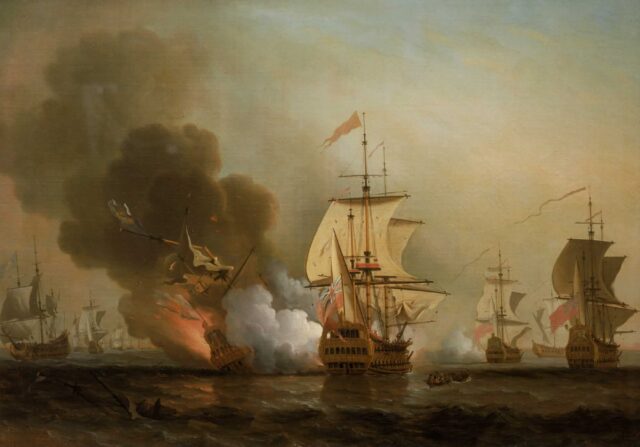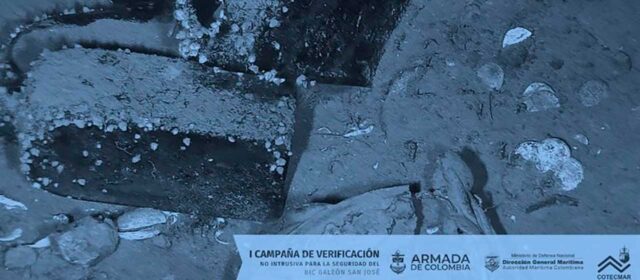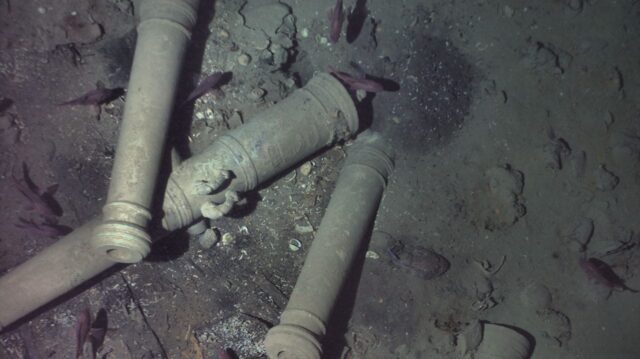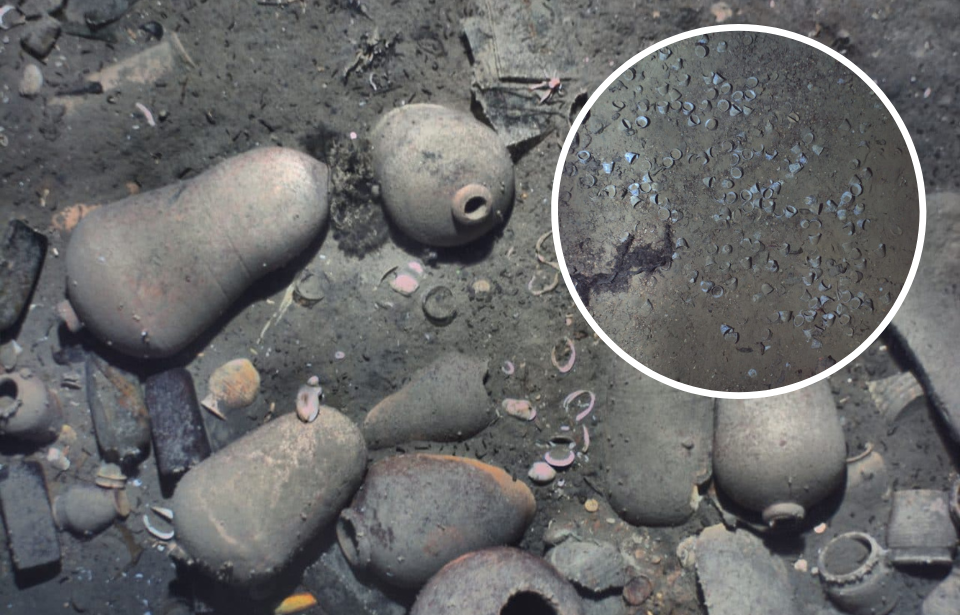A 300-year-old shipwreck that was discovered in the Caribbean in 2015 was confirmed to be that of the famed Spanish galleon San José. Nicknamed the “holy grail of shipwrecks,” the wreck is believed to hold a treasure trove of emeralds, gold and silver coins valued at $20 billion. The Colombian government has revealed it intends to perform an underwater expedition to the site, hoping to recover some of the objects.
Spanish galleon San José

San José was a 64-gun, three-masted galleon that served the Spanish Armada de la Guardia de la Carrera de las Indias. She was launched in 1698, and with her twin ship, San Joaquín, was part of the Treasure Fleet during the War of the Spanish Succession. During the conflict, she was tasked with transporting valuable goods from Spanish territories in the Americas across the Atlantic.
In 1708, San José was loaded with 116 chests filled with emeralds, seven million pesos and 30 million gold coins, valued at $20 billion. Headed for Cartagena, she and the fleet ran into an English squadron and engaged in battle. Unfortunately, the Spanish lost the naval engagement and San José sank to a depth of 600 meters. Of the 600 individuals onboard the vessel, only 11 were lucky enough to survive.
Expeditions to San José‘s wreck

The wreck of San José was first discovered off the coast of Cartagena in 2015. Traveling to the area aboard the Colombian Navy research ship ARC Malpelo, the team of international researchers from the Woods Hole Oceanographic Institution (WHOI) and the Maritime Archaeology Consultants (MAC) used the autonomous underwater vehicle (AUV) REMUS 6000 to survey the area where the shipwreck was believed to be located.
“The REMUS 6000 was the ideal tool for the job, since it’s capable of conducting long-duration missions over wide areas,” Mike Purcell, the expedition’s leader and an engineer with WHOI said in a press release.
After months of searching, the team was able to locate San José‘s wreck, with Purcell saying, “The wreck was partially sediment-covered, but with the camera images from the lower altitude missions, we were able to see new details in the wreckage and the resolution was good enough to make out the decorative carving on the cannons.”
A new expedition is scheduled to take place in spring 2024, with the Colombian government prepared to invest approximately $4.5 million to explore the wreck. This new research mission will employ state-of-the-art technology to survey and collect as much information about the state of San José as possible, so the team can evaluate if it’s possible to raise the sunken galleon.
Oceanographer and Rear Adm. Hermann León Ricón said this trip will require the use of a Navy ship, underwater robotic technology and high-quality cameras that can track movement.
Who has ownership over the shipwreck?

Since discovering San José‘s wreck in 2015, the question of ownership has caused many problems. Certain groups claim to have discovered the shipwreck as early as 1982, laying claim to 50 percent of the value of the treasure aboard the sunken galleon. The Colombian government has had to engage in legal and diplomatic disputes as ownership claims have also come from the United States and Spain.
Colombian officials have made several statements assuring that their intentions are for patrimonial reasons, not for the treasures believed to be with the wreck. Carlos Reina Martínez, an archaeologist and underwater cultural heritage expert with the Colombian Institute of Archaeology and History (ICANH), explained that the expedition was intended to reveal the realities of the 589 people who went down with the galleon when she sank, including the nature of their deaths.
More from us: New Discovery at Ancient Roman Town Reimagines the Fall of the Roman Empire
The Colombian government intends to build a museum in dedication to San José, to publicly display the contents retrieved from the wreck, including canons, ceramics and any other artifacts. They also intend to build a world-class conservation laboratory to preserve the items they plan to display at the facility.
